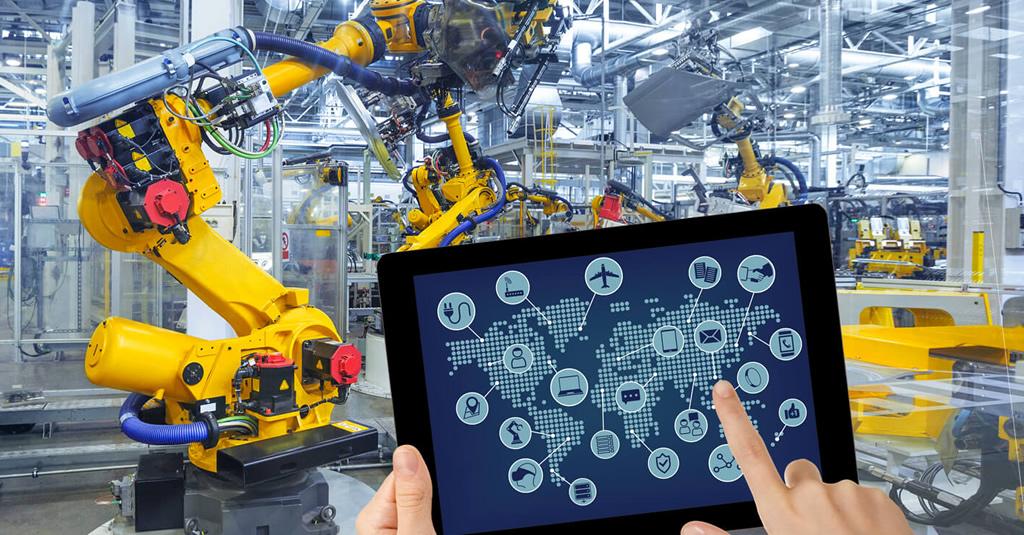Futuristic technologies in the industry
Due to the relevance and support provided by digitization, Talent Republic held the second edition of Future Land at Home, a look at the influence of technologies and their role in the evolution of different productive sectors.
In the futuristic technologies panel, they had experts in artificial intelligence from centers dedicated to the development and implementation of technology in the industrial sector.
Ivete Sánchez, coordinator of Technological Services at the Center for Research in Mathematics, manager of the Artificial Intelligence Alliance and mediator of the panel, mentioned that a futuristic technology is one that is highly developed and has a great impact on daily life and on the way to create products.
ARTIFICIAL INTELLIGENCE
From the Artificial Intelligence Alliance, this technology is defined as a combination of algorithms with the purpose of creating machines with capacities similar to those of a human being.
Horacio Canales, director of strategic technologies and postgraduate studies at the Center for Engineering and Industrial Development, shared that the center focuses on the optimization of industrial processes, for which active learning is applied in search of general intelligence.
“The biggest application is when we can use artificial intelligence to make strategic decisions that will have a long-term result. In that sense, there is a great opportunity in graphs because the information is usually seen as points; but now the trend is to take the connection information between the points,” he said.
María de la Paz Rico Fernández, CKO of the Center for Industrial Innovation in Artificial Intelligence, pointed out that, in the industry in general, they seek to make processes more efficient through continuous monitoring of variables, find their main KPIs and acquire information on the processes to through sensors and cameras; all of the above in order to improve its quality and production times.

Also, they have observed an increase in interest in natural language processing. “Companies seek to have more user-friendly sites: that searches are not carried out word by word; but that they have coherence and a meaning beyond through natural language processing”.
Salvador Vinals, CEO of Synapsis Strategy, reported that there is an increase in AI in decision-making aid applications, such as automation, prediction, and all those processes that require data processing.
“The artificial intelligence application is going to depend on the data of our company; which can create a barrier to adoption and an opportunity to review the state of the company: if there is structured data, if cleaning needs to be done, incorporate additional information, etc. ”, he detailed.
DIGITAL TWINS
Horacio Canales mentioned that the digital twin is the digital representation of a physical being; at the core of it, "we do it from organic models, with which we are collecting data for triage and also for machines that we call 4RI machines because of the stack to make everything virtual and then deploy it."
how to prank your friends @InktolingLucia and @Broadsiderguy be like https://t.co/9tjdFVocHU
— GG The Octoling (Agent 8) Mon Oct 26 21:14:33 +0000 2020
PROPER IMPLEMENTATION OF TECHNOLOGY
María de la Paz Rico Fernández, CKO of the Center for Industrial Innovation in Artificial Intelligence, highlighted the importance of obtaining data through the monitoring of all processes. “The first step is to locate the state of the company and where it wants to go; then, the sensors that are required are incorporated and the collaborators are educated to be attentive to certain things.”
She pointed out that the amount of data required depends on the company's problem. “If classic machine learning is required, perhaps not as much data is needed; if it is necessary to detect faults in parts, deep learning will have to be used, which entails collecting a large volume of data.”
One of the keys to avoiding technology implementation failures is to appoint a collaborator to properly label the data; finally, experiments are done to see which model works best.
ROBOTICS
Horacio Canales reported that in this area the two main technologies are 100% digital and physical robots. As for the latter, one of the challenges is to get robots integrated into operations.
"The difficult thing about technology is that you don't perceive it, and part of our job is to make that technology invisible, so that workers don't have difficulties handling it."
He pointed out that one way they are mitigating data collection difficulties, especially for robotics, is to deliver the project with digital control first. “The future is that the robot does not need a cell to act, even if it is an industrial robot; but that I can take you to the part and point out that there is a crack that requires welding.
For this, synthetic data from augmented reality and virtual reality are needed. The data as a service trend is going to enable intelligent autonomous robotics everywhere.”
DIGITALIZATION AND AI FOR THE FUTURE
“Digitization is about changing the culture, the processes and services offered, the hiring of suppliers; everything to create new information processing flows. Digitization should be seen as a means to improve the way we provide services”, said Salvador Vinals.
In closing, he pointed out that, going forward, artificial intelligence could help curate and structure data to proceed with a higher speed of adoption.
